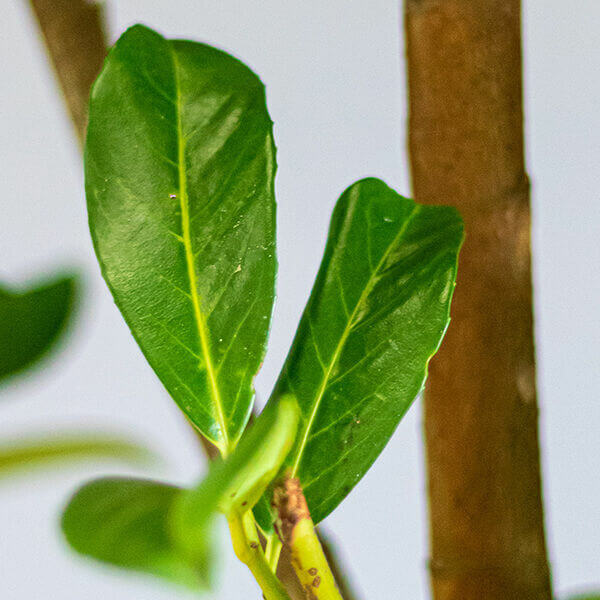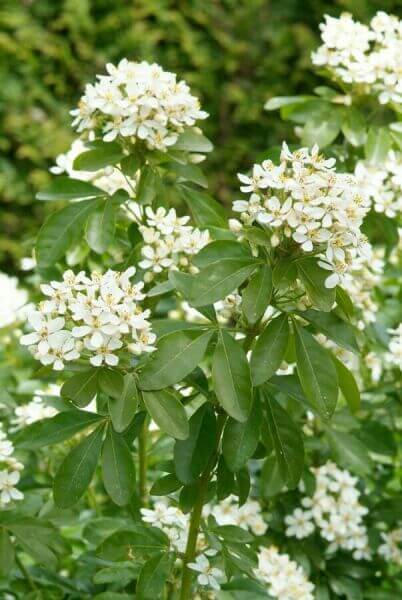Hedge Plants For Wildlife Habitats
Best Hedging Plants For Spring Interest
Enhance your garden's appeal with rich hedge ranges such as Yew (Taxus), Thuja, Laurel, Photinia, and Bamboo, commemorated for their structural integrity and ecological benefits.
Yew and Thuja offer evergreen protection and winter strength, while Laurel uses fast development and broad, fragrant leaves.
Photinia includes seasonal charm with its dynamic red foliage, and Bamboo provides a low-maintenance, serene ambiance.
These hedges enhance air quality, reduce noise, and produce tranquil, personal spaces.
Appropriate planting, spacing, and upkeep guarantee energetic development and ecological consistency.
Explore how these lavish ranges can elevate your garden's charm and wellness.
Secret Takeaways
Change Your Garden With Lush Hedge Varieties
- Select Yew for its dense, evergreen growth and unequaled durability.
- Opt for Laurel for its fast growth and broad leaves, guaranteeing fast personal privacy.
- Select Photinia for its vibrant seasonal foliage, which turns a striking dark red.
- Use Bamboo for a low-maintenance, winter-hardy hedge with visual appeal.
- Area plants 2-3 per meter and prune frequently for optimal growth and health.
Popular Hedge Plants
When transforming a garden with rich hedge varieties, it's necessary to think about popular hedge plants such as Yew, Thuja, Laurel, and Photinia due to their special attributes and benefits.
Yew (Taxus) is highly esteemed for its durability and dense, green growth, making it a prime option for enduring landscapes.
Thuja is kept in mind for its evergreen foliage and robust winter season strength.
Photinia includes seasonal vibrancy with red leaves that darken over time, creating vibrant visual appeal.
Laurel uses quick development and aromatic, broad leaves, perfect for fast privacy.
Additionally, Bamboo is an outstanding choice for ambiance, offering a low-maintenance, winter-hardy alternative that enhances the garden's visual with its classy, swaying walking canes.
These selections cater to a range of horticultural requirements and preferences.
Benefits of Garden Hedges
Garden hedges use a wide range of benefits, making them a valuable addition to any landscape. These natural barriers are cost-effective to carry out and offer considerable wind protection, boosting air flow and contributing to noise reduction. The dense foliage of hedges like Thuja and Beech guarantees privacy by blocking visibility, creating a serene and remote environment.
Hedges likewise play an important role in microclimate regulation, offering a stable environment that cultivates plant growth and decreases temperature variations. Their elaborate leaf structures filter toxins, improving air quality and adding to a healthier garden environment.
Furthermore, hedges master sound reduction, soaking up and deflecting sound waves to lower ambient sound levels. This dual functionality of supplying both acoustic and visual personal privacy boosts the general harmony and aesthetic appeal of any garden.
Planting and Upkeep Tips
For an effective hedge, meticulous preparation of the planting location is vital. Guarantee the soil has appropriate pH and drain to support strong root development.
Space the plants appropriately for the chosen species. Water the hedge regularly throughout its initial growth stage, changing as required with seasonal changes.
Execute a organized pest control and disease prevention strategy, using natural or chemical treatments when needed. Regularly inspect for aphids, termites, and fungal infections.
Apply mulch to retain moisture and suppress weeds. Seasonal pruning promotes dense development and air blood circulation, vital for plant health.
Following these standards will assist you cultivate a vibrant, well-kept hedge that boosts the appeal of your garden.
Spacing and Cutting Standards
Spacing and Trimming Standards
Correct spacing and cutting are vital for cultivating healthy, aesthetically appealing hedges. Adequate spacing ensures each plant receives sufficient nutrients, light, and airflow.
Follow these guidelines for optimal hedge maintenance:
- Spacing: Position hedge plants 2-3 plants per meter to motivate robust development.
- Pruning Strategies: Routine pruning is vital for preserving wanted hedge height and shape. Cut new growth in summer and cut back older wood during winter season.
- Seasonal Care: Adjust trimming methods and schedules according to seasonal requirements to make sure plant health.
- Hedge Height: Regularly monitor and cut to preserve the preferred hedge height and achieve consistent aesthetics.
Following these steps will guarantee your hedge prospers, enhancing both the appeal and functionality of your garden.
Picking the Right Hedge
Selecting the Right Hedge
Selecting the proper hedge includes evaluating aspects such as fully grown height, foliage density, and environmental strength. Successful hedge plant selection needs understanding each types' growth attributes and site-specific versatility.
For example, Yew (Taxus) provides excellent durability and thick growth, while Thuja is significant for its winter season resilience. In addition, considering upkeep requirements is essential; fast-growing types like Laurel or Privet demand routine trimming, whereas low-maintenance options like Bamboo or Ivy might be preferable for those looking for minimal maintenance.
Environmental aspects such as soil type, light accessibility, and wetness conditions ought to likewise guide the choice procedure. This careful approach ensures the picked hedges will flourish, supplying both aesthetic and functional advantages to the garden landscape.
Delivery and Planting Advice
To ensure your hedge plants prosper, they should be delivered by specialized carriers and planted promptly upon arrival.
Follow these important actions for effective planting:
- Soil Preparation: Enrich the soil with organic matter to improve drain and nutrient material.
- Planting Depth: Create a trench twice the width and equal to the depth of the root ball.
- Watering Methods: Water completely after planting, keeping the soil regularly moist but not filled.
- Mulching: Apply a layer of mulch to maintain moisture and suppress weeds.
Client Assistance and Service
Offered the crucial role of timely support in horticultural pursuits, our client assistance group is readily available six days a week through telephone, email, and social networks to provide skilled suggestions and promptly address any concerns. Their dedication to quick action times makes sure client complete satisfaction by fixing inquiries connected to plant health, optimum planting approaches, and upkeep schedules.

Communication Approach
Within 24 hours
This detailed support group, reinforced by a stellar 9.3/ 10 customer score, highlights our commitment to improving the gardening experience for each customer.
Regularly Asked Concerns
The Length Of Time Does It Take for Hedge Plants to Establish?
Hedge plants typically require one to three years to become fully established, with the exact duration differing by types and growing conditions.
Reliable care throughout this important duration is vital for robust development. Consistent watering, vigilant weed control, and appropriate fertilizer application are pivotal in promoting strong root advancement.
For instance, fast-growing types like Laurel may develop faster, while slower-growing ranges such as Yew might take longer. Persistent maintenance speeds up the facility procedure, resulting in dense and healthy hedges.
What Are the Finest Hedge Plants for Personal Privacy?
The concern of the very best hedge plants for personal privacy involves evaluating evergreen and deciduous alternatives.
Evergreen hedges like Thuja, Laurel, and Cypress supply year-round coverage, ensuring constant personal privacy.
In contrast, deciduous hedges such as Beech offer seasonal personal privacy, shedding leaves in chillier months.
Key upkeep suggestions for privacy hedges consist of regular cutting, fertilizing in spring, and proper spacing-- normally 2 to 3 plants per meter.
Furthermore, consistent watering and thorough weed removal are vital for promoting healthy, thick growth.
Can Hedge Plants Draw In Wildlife to My Garden?
Yes, hedge plants can attract wildlife to your garden by supplying important advantages like shelter, food, and nesting sites, thereby improving local biodiversity. Yew, holly, and laurel are exceptional for drawing in birds, while ivy supports a range of insects.
Nevertheless, it is necessary to keep in mind that there are some drawbacks, such as increased maintenance to handle pests and routine maintenance. Carefully choosing and keeping hedge varieties can assist stabilize these downsides and benefits, eventually fostering a dynamic and sustainable ecosystem in your garden.
Exist Any Blooming Hedge Plants Available?
Yes, there are flowering hedge plants available that can improve the appeal of your garden.
For instance, Elaeagnus, also called Olive Willow, produces aromatic white flowers in the fall, including a touch of sophistication.
Photinia, another popular option, showcases vibrant red leaves that develop into a rich green, developing a vibrant visual effect throughout the seasons.
To ensure these plants flourish, it's important to practice appropriate pruning methods and seasonal maintenance, such as cutting new growth in the summertime and cutting down in the winter season.
These procedures will assist keep the health and visual appeal of your blooming hedges.
How Do I Avoid Pests in My Hedge Plants?
To prevent pests in hedge plants, employ natural pest control methods and maintain proper hedge care. Introduce advantageous bugs like ladybugs, which take advantage of hazardous pests, to create a balanced ecosystem.
Regularly inspect your hedges for indications of invasion and immediately eliminate any afflicted parts to prevent the spread. Ensure the health of your hedges by applying well balanced fertilizers and supplying appropriate water.
Use mulching to keep soil moisture and proper spacing to lower plant tension and promote robust development. These practices collectively help in minimizing pest concerns and preserving a healthy hedge.
Conclusion
In essence, selecting the right hedge ranges such as Yew, Thuja, and Laurel can change any garden into a peaceful haven. These plants supply year-round greenery, enhance visual appeal, and offer read more practical advantages like noise reduction and wind defense.
Appropriate planting techniques, precise spacing, consistent watering, and seasonal cutting are crucial for optimal development.
Reputable delivery services and expert consumer support ensure a smooth experience from purchase to planting, making it simpler than ever to raise your outdoor area.
Garden hedges offer a plethora of benefits, making them an important addition to any landscape. These natural barriers are economical to implement and offer significant wind security, enhancing air flow and contributing to sound decrease. The dense foliage of hedges like Thuja and Beech makes sure privacy by blocking visibility, producing a remote and serene environment.

Pruning Techniques: Routine pruning is vital for preserving desired hedge height and shape. Cut new growth in summer season and cut back older wood during winter season.